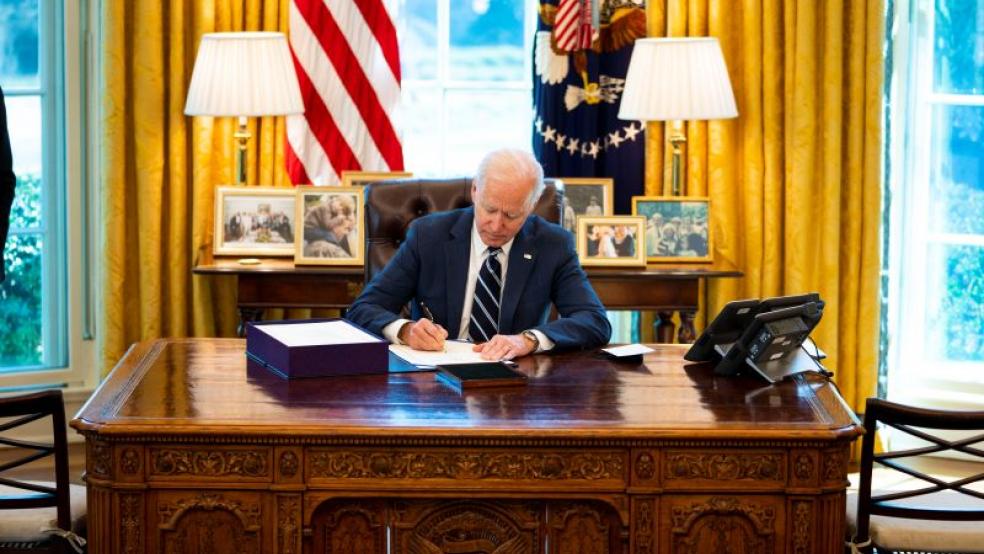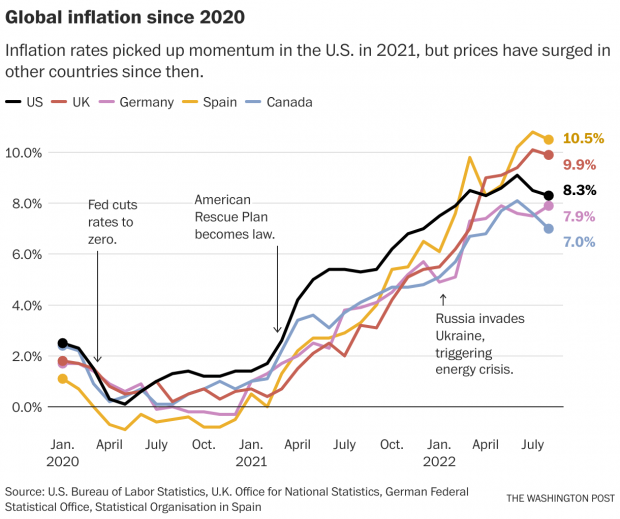President Joe Biden signed the $1.9 trillion American Rescue Plan Act into law 19 months ago. The benefits and drawbacks of the legislation are still being debated — and they will be for years, The Washington Post’s David J. Lynch wrote in a piece published Sunday. But, Lynch notes, “there is a consensus that the rescue plan was a double-edged sword: Bathing the economy in cash spurred the fastest recovery of any Group of 7 nation, even as the indiscriminate nature of that spending helped ignite the biggest jump in consumer prices in 40 years.”
Fueling inflation…but how much? At the time the law was enacted, inflation was tame but inflation warnings were already on the rise. It’s clear that prices would have risen without the rescue plan, but many economists say that the new law made inflation worse, with the highest estimate — a potentially flawed one — suggesting that about four percentage points of the 8.3% annual inflation rate could be attributed to the legislation. Other studies have concluded that the effects were smaller — with some putting its effects at about 3 percentage points and others at nearly negligible levels. “While experts disagree about the extent of the rescue plan’s contribution to inflation, it seems clear that its role has been larger than the Biden administration concedes while falling short of the calamity that Republicans claim,” Lynch wrote.
The Biden administration argues that the benefits of the law outweighed the costs — and that high inflation has not been confined to the United States (see chart below). “In June 2021, when the University of Chicago Booth School of Business surveyed economists, just 26 percent agreed that U.S. spending and monetary policies posed ‘a serious risk of prolonged higher inflation,’” Lynch reminds.
The bottom line: The economic and labor market recovery from the pandemic has been remarkable, with total employment having passed its pre-pandemic peak more than twice as fast as it did following the 2008 financial crisis. But the effects of the American Rescue Plan spending will continue to be studied and debated.






